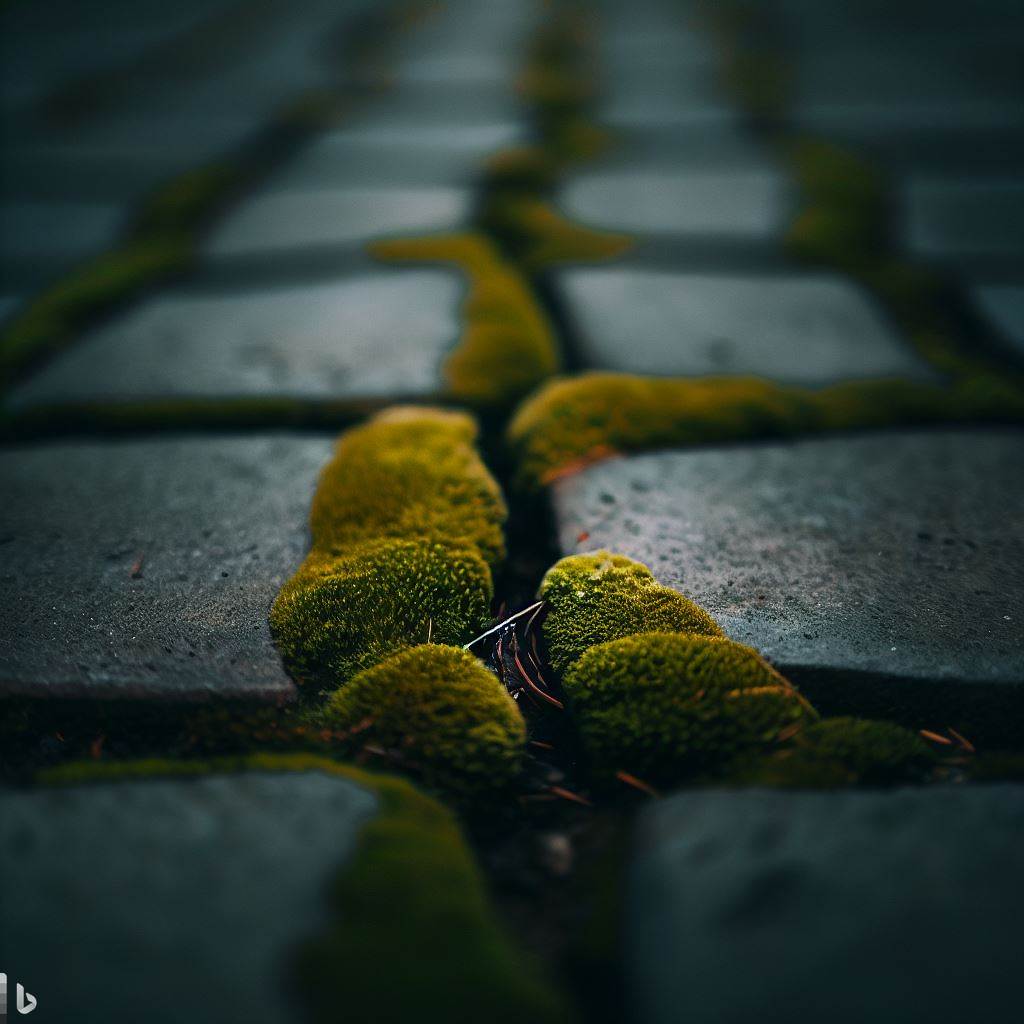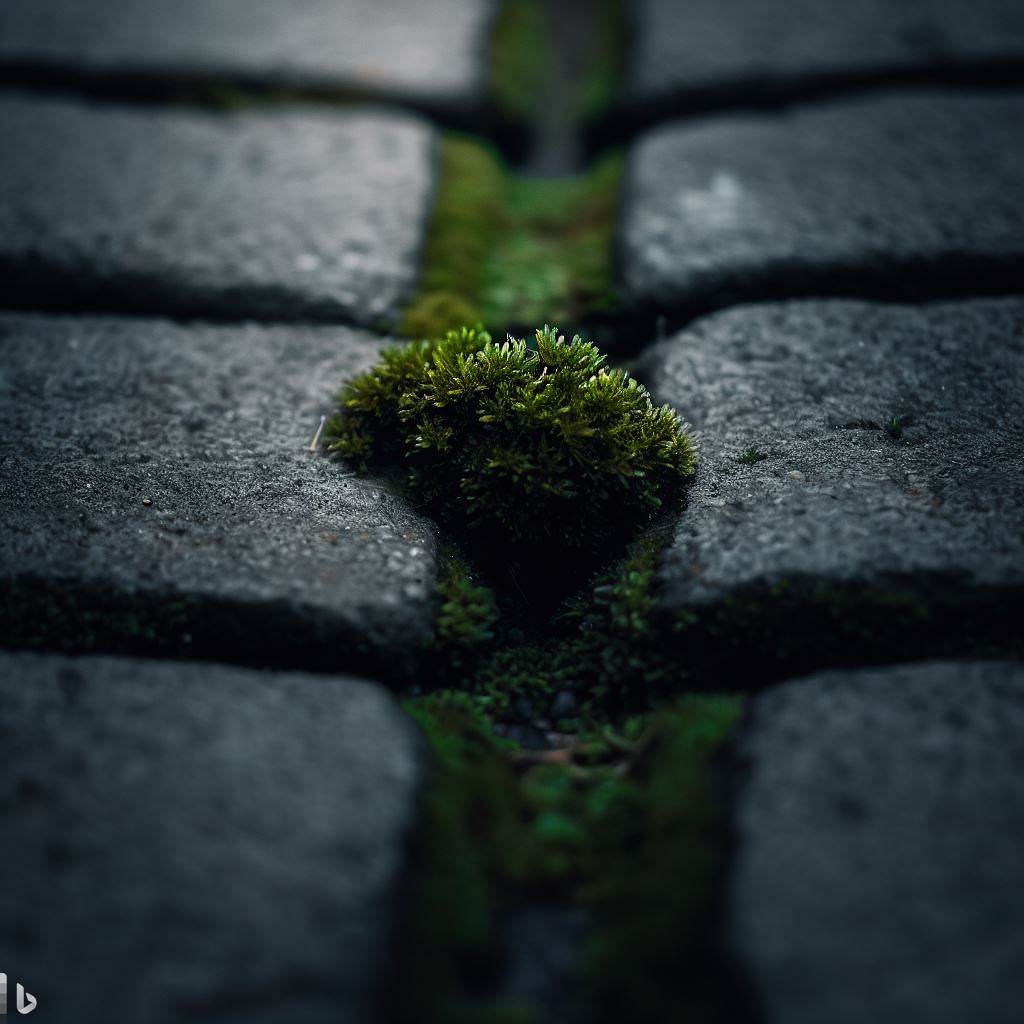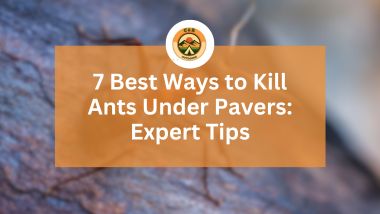Is moss between pavers bad? While the sight of moss between pavers can add a fairy-tale charm to your patio or walkway, there might be more to it. Explore whether the allure conceals potential issues.
While the green fuzz adds character and a touch of mother nature to our spaces, it could also spell trouble for us diligent homeowners. Underneath its quaint exterior, moss has got a bit of an attitude problem: it thrives in damp shady conditions while loosening up our well-laid pavers with its root systems.
Who would’ve thought? So before we get hoodwinked by this seemingly harmless intruder, let’s dig deeper into why having moss between your pavers might not be such a good idea after all.
Here is an exciting article you might be interested in is sand an insulator
Another article for you japanese snails for ponds

Dealing with Moss Between Pavers
When it comes to the presence of moss between pavers, there are both potential risks and benefits to consider.
While some people find the lush green carpet-like appearance of moss quite appealing, others may see it as a nuisance or even a hazard. Let’s explore the possible risks associated with moss growth between pavers.
Detecting the Presence of Moss
The first step in addressing moss between pavers is identifying its presence.
Moss tends to thrive in areas that receive shade or have poor drainage, making paved surfaces like patios, walkways, and driveways susceptible spots for its growth.
If you notice a fuzzy green layer forming on your pavers or feel a slimy texture when walking over them, chances are you have moss.
Methods for Removing Moss from Pavers
If you decide that removing the moss is necessary, several DIY methods can help eliminate this stubborn plant without causing damage to your paved surface.
1. One popular method involves creating a natural solution using equal parts white vinegar and water. Apply this mixture generously onto the affected area and scrub gently with a stiff brush or broom until all traces of moss disappear.
2. An alternative approach is using bleach diluted with water as an effective but harsher solution against moss growth on pavers.
Remember always to follow safety guidelines when handling bleach products and protect nearby vegetation from exposure.
3. In addition to these DIY methods, professional paving services often offer more specialized treatments such as pressure washing or chemical sprays designed specifically for removing tough patches of moss on pavement surfaces.
Impact of Weather and Moisture on Moss Growth
Moss thrives in damp environments, so it’s no surprise that rainy or humid climates can contribute to its growth between pavers.
Areas with poor water drainage are also more likely to have moss problems. Understanding the relationship between weather conditions and moss growth is essential for effective prevention and maintenance.
Preventive Measures to Stop Moss Growth
If you want to prevent moss from growing between your pavers altogether, there are several measures you can take:
a. Improving Drainage: Ensure proper water runoff by fixing any issues with your paving surface’s slope or adding additional drainage systems as needed.
b. Maintaining Sun Exposure: Trim back overhanging trees or bushes that may be blocking sunlight from reaching the paved area, as moss prefers shady conditions.
c. Applying Moss-Resistant Products: Treat your pavers with specialized products designed to deter moss growth. These typically contain chemicals that inhibit its establishment on hard surfaces without posing harm to humans or the environment.
When to Consider Professional Assistance for Removal
In some cases, removing stubborn patches of moss from between pavers may require professional assistance.
While DIY methods can be effective for smaller areas of infestation, larger-scale problems may benefit from expert help.
Professional paving services have access to powerful equipment and specialized treatments that can effectively eradicate persistent moss growth without damaging your pavement.
Effects on Aesthetics: Is It Really Bad?
The aesthetics of having moss between pavers largely depend on personal preference and the overall design aesthetic of your outdoor space.
Some individuals find the presence of vibrant green moss charming and quaint—it adds a touch of natural beauty while creating an inviting atmosphere.
In fact, many gardeners intentionally cultivate moss between their pavers as a creative design element. Moss can be seen as a living carpet that enhances the natural, organic look and feel of an outdoor space.
On the other hand, some people may view moss growth as unsightly or messy. They might prefer clean, uniform surfaces and prioritize a well-maintained appearance over the wild charm that moss brings.

Comparison between Killing and Coexisting with The Moss
The decision to remove or coexist with moss between your pavers ultimately comes down to personal preference and specific circumstances.
If you wish to eliminate the moss entirely, it is essential to consider the potential risks involved in using chemical treatments or harsh cleaning methods. These could damage both your paving surface and surrounding vegetation if not used correctly.
Alternatively, embracing the presence of moss can bring several benefits beyond its visual appeal.
Moss acts as a natural insulator, reducing heat absorption from paved surfaces during hot summer months. It also improves soil quality by retaining moisture and preventing erosion between pavers.
Moss offers an excellent natural solution for weed control on paved areas since it competes with unwanted plant growth by absorbing excess moisture and blocking sunlight from reaching weeds’ roots.
If you choose to coexist with moss between your pavers, regular maintenance tasks such as sweeping away debris or lightly brushing off any excessive growth can help keep it under control without resorting to potentially harmful removal methods.
A Final Word
Whether moss between pavers is bad or not depends on your individual perspective and preferences.
While there are potential risks associated with its growth, such as slippery surfaces or compromised aesthetics for some individuals, others may appreciate the natural beauty and practical benefits that moss provides.
Understanding the detection, removal methods, preventive measures, and considering research data will help you make an informed decision regarding moss management on your paved surfaces.
If you found this article exciting, this is another great read: leaving a foundation exposed over winter
We also found this great pick for you: manufactured home on basement
FAQs
Q: Is moss between pavers bad?
A: Not necessarily! While some people might see moss between their pavers as an eyesore, others actually find it quite charming and believe it adds to the natural beauty of their patio. However, if you prefer a moss-free look, there are ways to address it.
Q: How does moss grow between pavers?
A: Moss can grow between pavers when the conditions are right. It thrives in moist and shady areas, and can easily establish its roots in the spaces between your pavers. It’s a resilient plant that can quickly take over if left unchecked.
Q: What can I do to stop moss from growing between my pavers?
A: To prevent moss from growing between your pavers, it’s important to make the environment unfavorable for its growth. Avoid overwatering the area and try to increase sun exposure. Additionally, regular cleaning and removing any moss fragments that you find can help deter its growth.
Q: How do I get rid of moss between pavers?
A: If you want to remove moss from between your pavers, there are several methods you can try. Some people find boiling water or a mixture of baking soda and water to be effective. You can apply these solutions using a spray bottle. Alternatively, you could also physically remove the moss by uprooting it or using a pressure washer carefully.
Q: What’s the easiest way to remove moss between pavers?
A: The easiest way to remove moss between pavers is by using a mixture of boiling water and baking soda. Simply pour the mixture onto the affected area and scrub away the moss. This method is convenient and doesn’t require any specialized equipment.
Q: Can I use chemicals to kill moss between pavers?
A: Yes, if you have a stubborn moss problem, you can use certain chemicals to kill it. However, it’s important to choose environmentally-friendly products specifically designed for moss removal. Avoid using harsh chemicals that may harm surrounding plants or contaminate the environment.
Q: Does moss impact the health of my pavers?
A: Generally, moss doesn’t harm the pavers themselves. In fact, it can sometimes act as a natural cushion, preventing direct contact between the pavers and heavy objects. However, if moss is allowed to grow unchecked, it can create an uneven surface that may pose a tripping hazard.
Q: How can I boost the growth of moss between my pavers?
A: If you want to encourage moss to grow between your pavers, you can try planting moss fragments in the desired areas. Create a suitable environment by adding about half an inch of garden soil and keeping the area shaded and moist. Regular misting and avoiding direct sunlight can also help promote moss growth.
Q: Can I buy moss to plant between my pavers?
A: Yes, you can buy moss specifically intended for planting between pavers or in any other desired location. It’s a convenient option if you want to introduce moss to your landscape without waiting for it to naturally establish itself.
Q: How do I control moss growth between pavers?
A: To effectively control moss growth between your pavers, it’s important to regularly monitor the area for any signs of moss. If you spot moss starting to grow, try to remove it promptly before it spreads. This can be done by physically uprooting it, using chemical treatments, or following other aforementioned removal methods.
